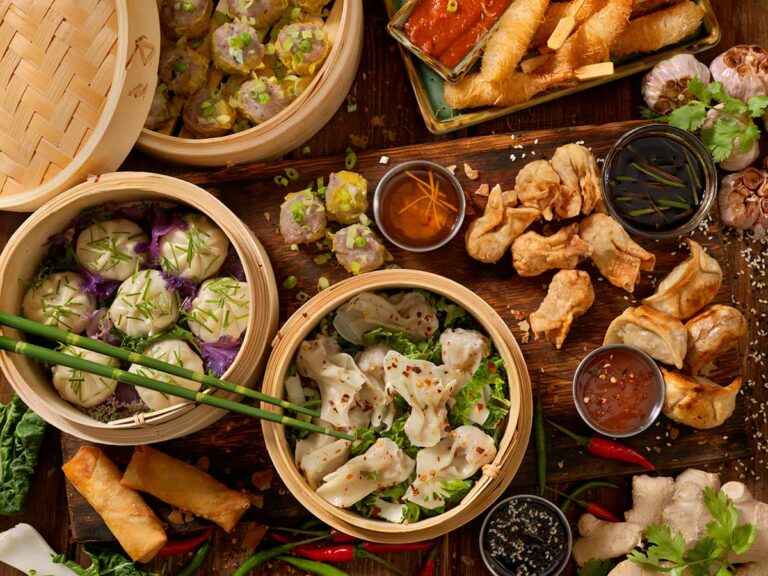Introduction: Street Food in China
Street food has been a significant part of Chinese culinary culture for centuries. These are the foods prepared and sold by vendors on the streets, alleys, and markets of China. Street food offers a glimpse of the country’s rich culinary heritage, which ranges from spicy Sichuanese cuisine to the savory dim sums of Guangdong province.
A Brief Overview of China’s Culinary Culture
China’s culinary culture is diverse and complex, and its cuisine has undergone significant changes over the centuries. The country’s traditional cuisine can be classified into eight main regional cuisines: Shandong, Sichuan, Guangdong, Fujian, Jiangsu, Zhejiang, Hunan, and Anhui. Each of these regions has a unique culinary style, with different ingredients, cooking techniques, and flavors.
Chinese cuisine is characterized by its use of a wide range of ingredients, including seafood, meat, poultry, vegetables, and grains. The use of spices and seasonings varies from one region to the next, but some of the most common include garlic, ginger, soy sauce, vinegar, and chili peppers.
The Origins of Street Food in China
Street food in China has a long history, dating back to the Tang dynasty (618-907 AD). During this time, street vendors sold snacks and refreshments to travelers and locals alike. However, it wasn’t until the Song dynasty (960-1279 AD) that street food became more widespread, with vendors selling a greater variety of foods, including noodles, dumplings, buns, and roasted meat.
Street food continued to evolve during the Ming (1368-1644 AD) and Qing (1644-1912 AD) dynasties, with vendors offering more sophisticated dishes and catering to the taste of the middle and upper classes. Today, street food is an integral part of China’s culinary landscape, with millions of people enjoying these tasty snacks every day.
The Popularity of Street Food in Urban Areas
Street food is particularly popular in China’s urban areas, where it provides a convenient and affordable option for people on the go. In cities like Beijing, Shanghai, and Guangzhou, street food is ubiquitous, with vendors selling everything from steamed buns to grilled skewers.
Street food has also become an important part of China’s foodie culture, with food tours and festivals dedicated to showcasing the best street foods from across the country. These events attract thousands of visitors every year, highlighting the growing popularity of street food in China.
Popular Street Food Vendors across China
Some of the most famous street food vendors in China include the Wangfujing Snack Street in Beijing, the Xiaolongbao street in Shanghai, and the Old City Street Food Market in Guangzhou. These vendors offer a wide range of delicious and affordable street foods, from crispy scallion pancakes to spicy hot pot.
Health and Safety Concerns of Street Food
Despite its popularity, street food in China has been the subject of health and safety concerns in recent years. Contamination and food poisoning are among the biggest risks associated with street food, given the unregulated nature of the industry.
However, many vendors have taken steps to address these concerns, with some adopting more hygienic food preparation practices and undergoing regular health inspections.
Regulations Surrounding Street Food in China
China has implemented regulations to ensure the safety and quality of street food. In 2018, the government launched a nationwide campaign to improve food safety and hygiene standards in the industry. The regulations cover everything from food preparation and handling to waste disposal and sanitation.
Local authorities are responsible for enforcing these regulations, and vendors who fail to comply with them can face fines and penalties.
Conclusion: The Future of Street Food in China
Despite the challenges facing the industry, street food remains an essential part of China’s culinary culture and a popular choice for millions of people. With increased regulation and greater awareness of health and safety concerns, the future of street food in China looks bright. As the country continues to embrace new culinary trends and innovations, street food is likely to remain a vibrant and tasty part of Chinese cuisine for years to come.

